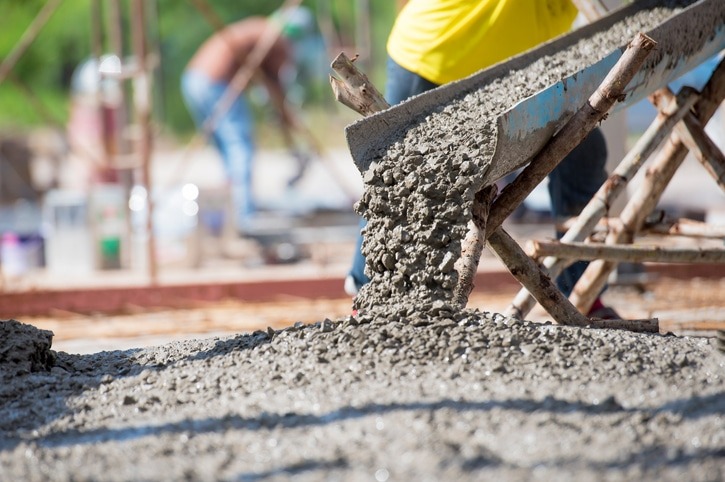Concrete remains the backbone of modern infrastructure, from towering skyscrapers to sprawling bridges, roadways, and industrial complexes. Despite its strength and durability, concrete inevitably experiences wear, cracking, and damage over time. This makes concrete repair an essential and growing part of the construction and maintenance industry.
As we approach 2025, new materials and innovative methods are shaping the future of concrete repair. Whether it’s restoring damaged structures, enhancing lifespan, or improving environmental sustainability, these trends promise more effective and cost-efficient solutions.
This comprehensive guide explores the top trends in concrete repair for 2025, highlighting cutting-edge products like plugging chemical, micro concrete, and advanced old concrete to new concrete bonding agents. We also spotlight industry leaders like Fospak, who are driving innovation in this critical sector.
1. The Growing Importance of Concrete Repair
Concrete is durable but not indestructible. Factors such as weathering, freeze-thaw cycles, chemical attack, corrosion of reinforcement, and mechanical wear contribute to its deterioration. In infrastructure-heavy countries like Pakistan, maintaining and repairing concrete structures is vital to ensure safety and extend service life.
Concrete repair isn’t just patchwork, it’s a science. Using the right materials and techniques can restore structural integrity, improve aesthetics, and reduce environmental impact by avoiding full replacements.
2. Advanced Materials Driving Concrete Repair
Plugging Chemical: Rapid Leak Sealing
One of the standout materials gaining traction is plugging chemicals. This product is specifically designed for fast and effective sealing of water leaks in concrete structures such as tunnels, water tanks, and foundations.
Plugging chemicals react quickly on contact with water, forming an impermeable barrier that halts seepage immediately. This rapid action makes them indispensable in emergency repairs where time is critical.
Micro Concrete: Precision Repair and Strengthening
Micro concrete is another key player in the evolving repair landscape. Unlike traditional concrete, micro concrete has a finer particle size, allowing it to penetrate smaller cracks and voids. It offers superior adhesion and is ideal for detailed repairs, including patching, leveling, and structural strengthening.
Micro concrete cures faster and achieves high compressive strength, making it suitable for both new construction overlays and refurbishment works. Its adaptability allows for use in vertical and overhead repairs, expanding the possibilities for effective restoration.
Old Concrete to New Concrete Bonding Agent: Ensuring Structural Unity
One of the biggest challenges in concrete repair is achieving a strong bond between existing (old) concrete and the newly applied repair material. Poor bonding can lead to delamination, cracking, or premature failure.
Enter advanced old concrete to new concrete bonding agents. These specialized products create a chemical and mechanical bond at the interface, ensuring the repaired area behaves like a monolithic structure. They improve adhesion, durability, and resistance to shrinkage and movement.
Fospak’s bonding agents, for example, are engineered to work in diverse environmental conditions and with various repair materials, helping contractors achieve long-lasting repairs.
3. Emerging Methods and Techniques in Concrete Repair
Polymer-Modified Repair Mortars
Polymer-modified mortars incorporate polymers (such as acrylics or SBR chemical) into cementitious mixes. This enhancement improves flexibility, adhesion, and waterproofing properties of the repair material.
Such mortars resist cracking and shrinkage better than traditional mixes, allowing repaired surfaces to withstand environmental stresses and dynamic loads more effectively.
Shotcrete and Sprayed Concrete
Shotcrete involves spraying concrete or mortar pneumatically at high velocity onto damaged surfaces. It’s particularly useful for repairing large areas, tunnels, bridges, and complex shapes where formwork is difficult.
The technique ensures dense compaction and excellent adhesion, and can be combined with micro concrete and bonding agents for superior performance.
Non-Destructive Testing and Monitoring
Technological advances in non-destructive testing (NDT) tools are revolutionizing how repairs are planned and monitored. Methods like ultrasonic pulse velocity, ground-penetrating radar, and infrared thermography allow engineers to detect internal damage without invasive procedures.
This data enables targeted repairs, reducing costs and minimizing disruption.
4. Sustainability Trends in Concrete Repair
Environmental concerns are driving the development of greener repair materials. Innovations include:
- Cement replacement materials that reduce carbon footprint
- Use of recycled aggregates and industrial by-products
- Low-VOC (volatile organic compounds) repair chemicals
These approaches align repair work with broader sustainability goals, a growing priority for clients and regulators.
5. Why Choose Fospak for Your Concrete Repair Needs?
With over 25 years of experience, Fospak (Pvt) Ltd. is a trusted leader in Pakistan’s construction chemical industry. Fospak’s portfolio includes high-performance plugging chemicals, micro concrete products, and advanced bonding agents designed to meet the toughest repair challenges.
Fospak combines quality manufacturing with expert technical support, helping contractors and engineers deliver durable repairs efficiently. Their products meet international standards and are optimized for local climatic and soil conditions.
6. Practical Tips for Effective Concrete Repair in 2025
- Assess damage thoroughly using visual inspection and NDT tools
- Select repair materials based on structural requirements, exposure conditions, and compatibility
- Prepare surfaces properly—clean, remove loose material, and ensure proper moisture content
- Apply bonding agents carefully to enhance adhesion
- Consider environmental factors, like temperature, humidity, and exposure during repair
- Follow manufacturer instructions precisely for mixing, application, and curing
The landscape of concrete repair is evolving fast with new materials like plugging chemical, micro concrete, and sophisticated old concrete to new concrete bonding agents transforming how repairs are done. Embracing these trends helps ensure stronger, longer-lasting structures that meet modern performance and sustainability demands.
For quality products and expert support, partnering with industry leaders like Fospak can make all the difference in delivering successful concrete repair projects in 2025 and beyond.

